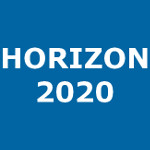Establishing standardization guidelines for finite-element optomechanical simulations of refractive laser surgeries: An application to photorefractive keratectomy
Fantaci, Benedetta (Universidad de Zaragoza) ; Calvo, Begoña (Universidad de Zaragoza) ; Barraquer, Rafael ; Picó, Andrés ; Ariza-Gracia, Miguel Ángel
Resumen: Purpose: Computational models can help clinicians plan surgeries by accounting for factors such as mechanical imbalances or testing different surgical techniques beforehand. Different levels of modeling complexity are found in the literature, and it is still not clear what aspects should be included to obtain accurate results in finite-element (FE) corneal models. This work presents a methodology to narrow down minimal requirements of modeling features to report clinical data for a refractive intervention such as PRK. Methods: A pipeline to create FE models of a refractive surgery is presented: It tests different geometries, boundary conditions, loading, and mesh size on the optomechanical simulation output. The mechanical model for the corneal tissue accounts for the collagen fiber distribution in human corneas. Both mechanical and optical outcome are analyzed for the different models. Finally, the methodology is applied to five patient-specific models to ensure accuracy. Results: To simulate the postsurgical corneal optomechanics, our results suggest that the most precise outcome is obtained with patient-specific models with a 100 µm mesh size, sliding boundary condition at the limbus, and intraocular pressure enforced as a distributed load. Conclusions: A methodology for laser surgery simulation has been developed that is able to reproduce the optical target of the laser intervention while also analyzing the mechanical outcome. Translational Relevance: The lack of standardization in modeling refractive interventions leads to different simulation strategies, making difficult to compare them against other publications. This work establishes the standardization guidelines to be followed when performing optomechanical simulations of refractive interventions.
Idioma: Inglés
DOI: 10.1167/tvst.13.5.11
Año: 2024
Publicado en: Translational Vision Science and Technology 13, 5 (2024), 11[19 pp.]
ISSN: 2164-2591
Factor impacto JCR: 2.6 (2024)
Categ. JCR: OPHTHALMOLOGY rank: 27 / 98 = 0.276 (2024) - Q2 - T1
Factor impacto SCIMAGO: 0.992 - Ophthalmology (Q1) - Biomedical Engineering (Q1)
Financiación: info:eu-repo/grantAgreement/ES/DGA-FSE/T24-20R
Financiación: info:eu-repo/grantAgreement/EC/H2020/956720/EU/Opto-Biomechanical Eye Research Network/OBERON
Tipo y forma: Article (Published version)
Área (Departamento): Área Mec.Med.Cont. y Teor.Est. (Dpto. Ingeniería Mecánica)
 You must give appropriate credit, provide a link to the license, and indicate if changes were made. You may do so in any reasonable manner, but not in any way that suggests the licensor endorses you or your use. You may not use the material for commercial purposes. If you remix, transform, or build upon the material, you may not distribute the modified material.
You must give appropriate credit, provide a link to the license, and indicate if changes were made. You may do so in any reasonable manner, but not in any way that suggests the licensor endorses you or your use. You may not use the material for commercial purposes. If you remix, transform, or build upon the material, you may not distribute the modified material.
Exportado de SIDERAL (2025-09-22-14:41:12)
Visitas y descargas
Idioma: Inglés
DOI: 10.1167/tvst.13.5.11
Año: 2024
Publicado en: Translational Vision Science and Technology 13, 5 (2024), 11[19 pp.]
ISSN: 2164-2591
Factor impacto JCR: 2.6 (2024)
Categ. JCR: OPHTHALMOLOGY rank: 27 / 98 = 0.276 (2024) - Q2 - T1
Factor impacto SCIMAGO: 0.992 - Ophthalmology (Q1) - Biomedical Engineering (Q1)
Financiación: info:eu-repo/grantAgreement/ES/DGA-FSE/T24-20R
Financiación: info:eu-repo/grantAgreement/EC/H2020/956720/EU/Opto-Biomechanical Eye Research Network/OBERON
Tipo y forma: Article (Published version)
Área (Departamento): Área Mec.Med.Cont. y Teor.Est. (Dpto. Ingeniería Mecánica)
Exportado de SIDERAL (2025-09-22-14:41:12)
Permalink:
Visitas y descargas
Este artículo se encuentra en las siguientes colecciones:
Articles > Artículos por área > Mec. de Medios Contínuos y Teor. de Estructuras
Record created 2024-06-05, last modified 2025-09-23
